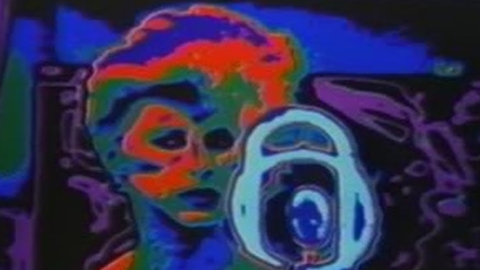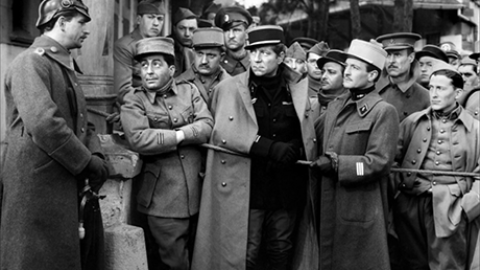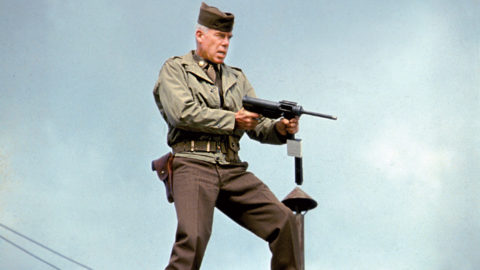Festivals: Il Cinema Ritrovato
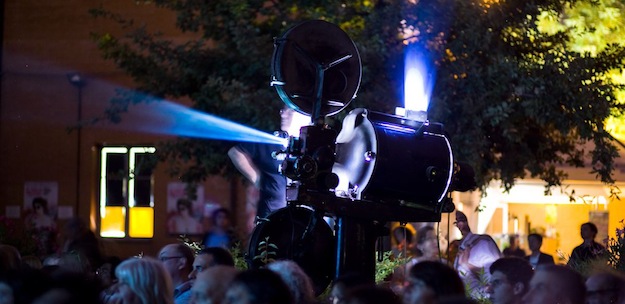
“It has gotten so big in recent years”: I heard some variation of this sentiment multiple times each day at this year’s edition of Il Cinema Ritrovato. This being only the second year I’ve traveled to Bologna, it was difficult for me to gauge the veracity of such a notion, which seemed—especially when put forward by any number of ICR vets—to contain a not-so-subtle subtext of “and boy, what a pity.” But regardless of its expanded lineup or the increased number of attendees, Il Cinema Ritrovato remains a rare beast indeed: a one-week, primarily repertory film festival, mind-bogglingly dense with new restorations, legendary prints, discoveries and rediscoveries, canonical works presented under optimal screening conditions, and an abundance of curios dating from the birth of the medium. Seemingly every international film archive was represented in one form or another (the festival overlapped with the annual congress of the International Federation of Film Archives, also held in Bologna this year). The attendees ranged from intrepid programmers in search of curatorial inspiration and advance glimpses at new restorations, adventurous critics and scholars on the historiographic prowl, relatively few industry types who have made the history of cinema their business, and even some game civilians. Suffice it to say, one feels the cine-love pretty quickly, and the festival’s facade of being a utopian film-nerd meet-up seems more or less truthful.
The first night featured an outdoor screening of the Cineteca di Bologna’s recent digital restoration of Chaplin’s Modern Times (1936) on the Piazza Maggiore, the city’s largest public square. If you didn’t get there an hour or so ahead of time, you were condemned to stand nearly a football-field away from the massive screen and enjoy the presentation upright: the festival’s Piazza screenings, free and open to the non-badged public, are grand-scale happenings so huge and egalitarian that you quickly get over your disappointment that fatigue (whether due to jet lag, too many movies, or a day spent staving off punishing temperatures while hustling from one semi-air-conditioned cinema to another) has ensured that you will likely watch 20-some minutes before calling it a night.
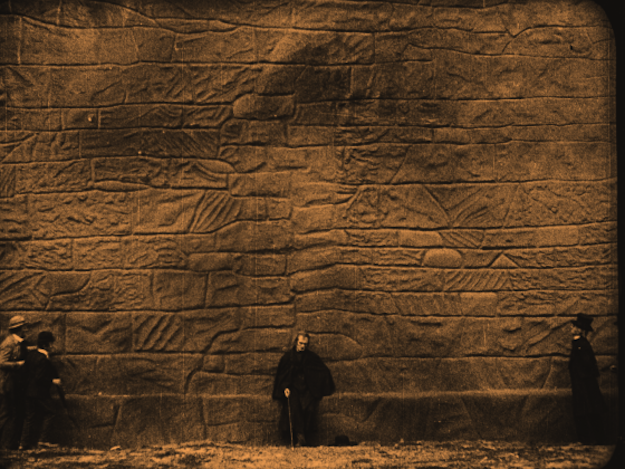
Destiny
Similar borderline-frustrations emerged over the bevy of silent films shown in the festival’s Sala Mastroianni, the site for many a can’t-miss screening despite being one of ICR’s smallest venues. A screening of the Cohen Film Collection’s new restoration of Buster Keaton’s Seven Chances (1925) was filled well past the theater’s capacity, but as soon as the film’s proto-Technicolor opening graced the screen, the venue’s sardine-can atmosphere rapidly came to seem neither here nor there. Keaton is perhaps the festival’s biggest perennial draw and a frequent star of its promotional materials; Seven Chances, although seldom cited as a Buster masterpiece on the level of Sherlock Jr. or The General, remains a work of relentless hilarity and visual invention of another order, highlighted by a majestic chase scene in which our hero must escape the violent indignation of a small army of would-be brides. (Hell hath no fury like a woman who responded to an ad in the newspaper…)
That this film was immediately followed in the same venue that afternoon by a screening of the Murnau Foundation’s beautiful recent restoration of Fritz Lang’s Destiny (1921) speaks to the can’t-go-wrong vibe of the festival’s slate: stand in the back for a packed-to-the-gills projection of a Keaton, grab a seat as the theater thins out between screenings, and gear up for a glorious, immersive presentation of Lang’s time-traveling psycho-goth epic, with plenty of time to spare for an aperitif before a typically languorous Bolognese dinner and a slew of options for evening screenings to attend. Murnau Foundation representative Ernst Szebedits noted in his introduction that the first section of Tarantino’s The Hateful Eight is a rather obvious homage to the beginning of Destiny, a perfectly fitting observation to make at a festival that so completely and pleasurably collapses the past into the present.
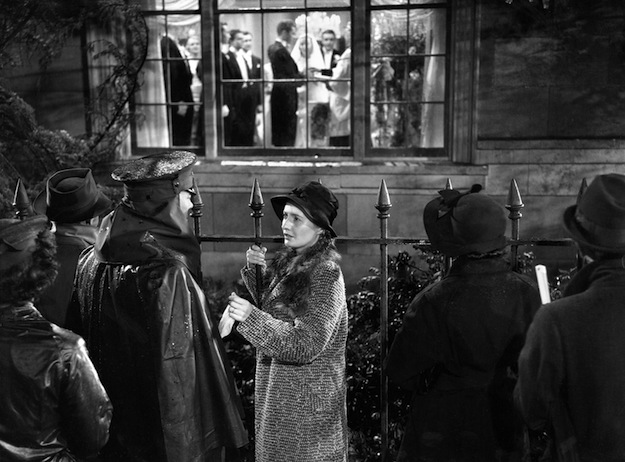
Stella Dallas
The festival’s growing popularity has trickled down to affect its other plein air screenings, held on the comparatively small Piazzetta Pier Paolo Pasolini. This year ICR introduced a RSVP system to cap the seated audience at around 150, with the less on-it attendees having to make do with sitting on the ground, leaning against a tree, or rooting around for a chair to borrow from the festival’s outdoor café. Stakes were high: the two screenings I caught in this setting were ones for the ages, carbon arc lamp projections (using an antique projector that festival programmer Mariann Lewinsky dubbed “the Grandmother”) of Henry King’s transcendent weepy Stella Dallas (1925) and Jean Epstein’s landmark dockside melodrama Cœur fidèle (1923), the latter shown in the context of a retrospective for Epstein’s sister and frequent collaborator Marie, organized by the Cinémathèque Française and screening from an immaculately preserved 35mm print from its collection. The carbon arc lamp yields a shimmering, inky, rich black-and-white that assumes an inescapably trippy aspect as polychromatic plumes of smoke escape from the apparatus each time the projectionists swap out a burnt-up carbon rod. Incidental psychedelia notwithstanding, Stella Dallas proved a major revelation for many of us, an undeniable emotional tour de force helmed by one of the studio system’s most underrated craftsman. King may have been the directorial regent at Fox for a time, but his reputation has long been negligible among auteurist cults; Stella Dallas’s heartrending tale of maternal love, embarrassing parents, and class-based fatalism, deftly pitched and already bearing several of King’s later-career signatures (ahead-of-his-time location shooting and a refreshingly meandering way with narrative), was evidence enough that a widespread reappraisal of his oeuvre is overdue.
An altogether different kind of psychedelic trip was the Academy Film Archive’s “Technicolor Reference Collection Show,” a stunning assortment of Technicolor reference elements presented by a squad of the Academy’s archivists—nine films represented in total, mostly by way of half- and partial-reels with heads and tails left on—before a totally packed house in the Cinema Arlecchino, the festival’s most civilized venue (serviceable sightlines, perceptible air-conditioning, etc.). Comprised of fragments of Ford’s The Quiet Man, Dwan’s Silver Lode, Hawks’s Rio Bravo, King Vidor’s Solomon and Sheba, Hitchcock’s To Catch a Thief, and, of course, multiple Douglas Sirk films, to name a handful, this program of semi-pristine material that was never intended to be screened theatrically (reference prints were struck during color-grading, prior to the production of exhibition prints in ye olde Technicolor workflow) was unlike anything most of us had seen before.
Never had I made particular note of the use of color in The Quiet Man—represented by its horse race scene, in which Maureen O’Hara’s shiny red dress cuts a garish figure across the puke-like palette of the Irish landscape—nor had I picked up on just how funny the scene in To Catch a Thief where Cary Grant’s cat burglar ham drops a chip into a fellow gambler’s cleavage is. The program was firstly about pure engagement with those sensuous surface qualities that only Technicolor can afford (even where the final color schemes for several of the films differed considerably from what one finds in the reference elements), but oddly, a kind of exquisite corpse “film” emerged across the various fragments, tossing new light onto previously obscured aspects even in movies as worn-in and all-too-familiar as All That Heaven Allows. As Academy Film Archive director Michael Pogorzelski put it in his introduction, only at Il Cinema Ritrovato could such a program fill every seat in quite a large theater.
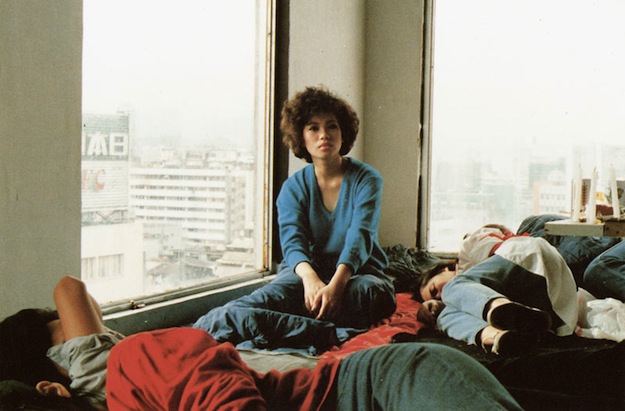
Taipei Story
For those looking to latch onto a few of the festival’s constituent series/retrospectives and ride them out, the options were doubtlessly appealing: the aforementioned tribute to Marie Epstein; an “alternate” history of Argentinean cinema, curated by the filmmaker Edgardo Cozarinsky and critic Fernando Martín Peña; a version of the Museum of Modern Art’s series of films produced at Universal under Carl Laemmle Jr., programmed by MoMA’s Dave Kehr; the second part of last year’s enticing history of color in Japanese cinema; a retrospective for little-known-in-the-U.S. Italian screenwriter/producer/director Mario Soldati; retros for Marlon Brando and Jacques Becker; and many others I scarcely had time to try out. Several of these have already appeared in one form or another on the New York repertory circuit, but there’s something to be said for delving into such a strange (and remarkably efficient) film as James Whale’s The Kiss Before the Mirror (1933) alongside an international crowd, nested between viewings of Becker’s superb provincial whodunit Goupi Mains Rouges (1943) and a splendid O.G. Technicolor print of Hitchcock’s Marnie (1964). Context goes a long way toward determining what one gets out of a film, and the embarrassment of riches represented by ICR’s slate not only demanded that viewers situate these films in a century-plus, globe-spanning historical continuum, but also heightened the pleasure of taking a chance on something one has never heard of. In short, even when the films weren’t great, the exciting sense of taking a casual stroll on cinematic history’s beaten paths and neglected trails alike never dissipated.
Two discoveries, one well-known and the other not so much: The Film Foundation presented its new digital restoration of Edward Yang’s Taipei Story (1985), a masterpiece that historically hasn’t been easy to see in the States. A delicate work of low-key modernism, imbued with fragile melancholia and an astonishing turn by none other than Hou Hsiao-hsien in the male lead, the restoration of Taipei Story will likely go a long way toward reaffirming its rightful place as one of the key films produced in southeast Asia near the end of the 20th century, on a par with Yang’s towering (both in terms of stature and duration) A Brighter Summer Day (1991). Nico Papatakis’s Les Abysses (1963), digitally restored by Gaumont, was a thoroughly startling experience; based on the infamous case of the Papin sisters that also inspired Jean Genet’s The Maids and Claude Chabrol’s La Cérémonie (1995), Les Abysses puts viewers on notice from the get-go with a pre-credit montage that frenetically summarizes the entire plot, albeit in head-spinning disorder.
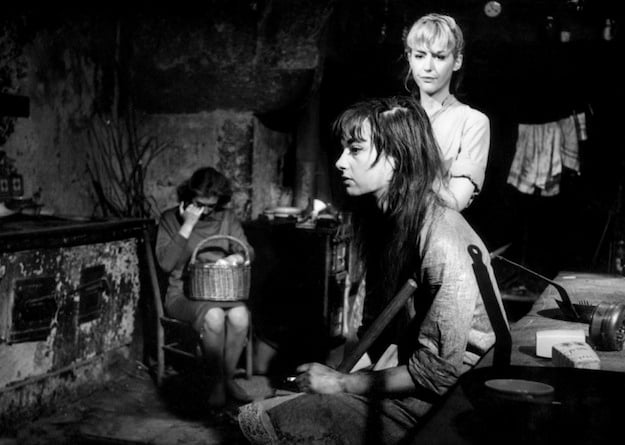
Les Abysses
Papatakis had sought the permission of his friend Genet to adapt The Maids, but when Genet declined, Papatakis elected to spin his own tale of murderous housekeeping sisters cracking up in the countryside. Good thing, too: Papatakis’s knotty narrative is a wholly distinctive, funkier animal, marked equally by rapturous flights of hysteria and play with class and gender that’s subtler than meets the eye. (Plus, it’s genuinely funnier than Chabrol’s eminently mean-spirited black-comic zenith.) If one could hang with the no-chill theatricality of the film’s performances and its highly flammable approach to staging chamber drama, Les Abysses was quite a blast.
But perhaps the most pleasurable screening I caught all week was of Robert Aldrich’s Depression-set Emperor of the North Pole (1973, also known sans Pole), a delightfully arbitrary, rollicking freight train of an existentialist action-comedy, starring Ernest Borgnine and Lee Marvin at their “complicated tough guy” best and a baby-faced Keith Carradine sprawling in every which direction. Affectionately referred to by many fellow attendees as “Aldrich’s hobo film,” Emperor of the North Pole chronicles a mortal duel between Shack (Borgnine), a sadistic train conductor looking to maintain his unblemished record vis-à-vis freeloaders at any cost, and Marvin’s Emperor, the mumbling pound-for-pound champ of hitching a ride who reluctantly takes on Carradine’s arrogant rookie as his train-hopping protégé.
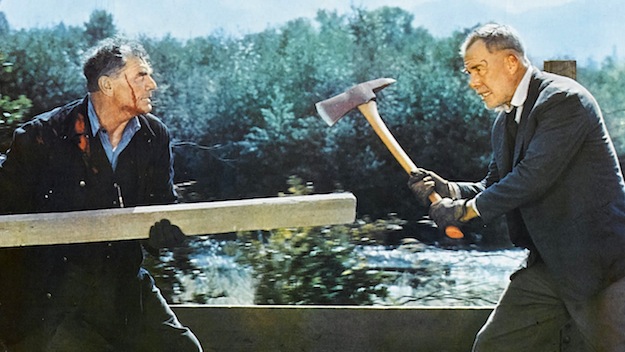
Emperor of the North Pole
The action is dirty, nasty, and totally legible; the comedy, understated and set into motion by its players’ irresistible charms. One can almost overlook the film’s utterly ridiculous opening theme, “A Man and a Train,” whose lyrics exhaustively (and quite literally) catalog the many traits that distinguish men from trains. (A fellow programmer told me that legend has it Carradine originally penned “It Don’t Worry Me” from Robert Altman’s Nashville to serve as the theme for Emperor of the North Pole, but Aldrich passed.) Running from one balmy Bolognese cinema to another in search of celluloid kicks, it was easy to identify with Marvin and Carradine’s wily tramps—like any habitually curious cinephile, they’re always on the move, always sneaking onto another proverbial train bound for God-knows-where.
Dan Sullivan is the assistant programmer at the Film Society of Lincoln Center.



